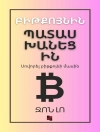Writing the preface for a book feels good, because once you find yourself in a situation to write tiie preface, it usually means that you have already written the rest of the book. Writing this book was a real challenge. I would have probably never written it if there was not Stefan Voss from the University of Hamburg to propose me to write it – thanks Stefan! It may seem that it is not very difficult to describe the application of a relatively young technology, such as the Semantic Web, to the domain of education. It may seem that there is actually not much to write about that topic. But it just seems so. On the contrary, the greatest challenge in writing this book was the abundance of material and exciting ideas about how to apply Semantic Web technologies to education. I knew from the very beginning that I will have to select carefully from many theories, practices, evolving ideas and approaches, and important research efforts, in order to compose a coherent whole. Worse still, I also knew that I will have to leave out of the book many other results, initiatives, and ongoing projects that would certainly be worth describing under more relaxed constraints. Thus, the endeavor was exhausting. The Semantic Web is about how to deploy artificial intelligence concepts and techniques on the Web, in order to harness the Web and make it more useful, more user-centered, and more responsive to human interaction.
Jadual kandungan
to Web-Based Education.- to the Semantic Web.- The Setting for Semantic Web-Based Education.- Architectural Issues.- Learning Technology Standardization Efforts.- Personalization Issues.- Ontological Engineering for Semantic Web-Based Education.- Applications and Research.












